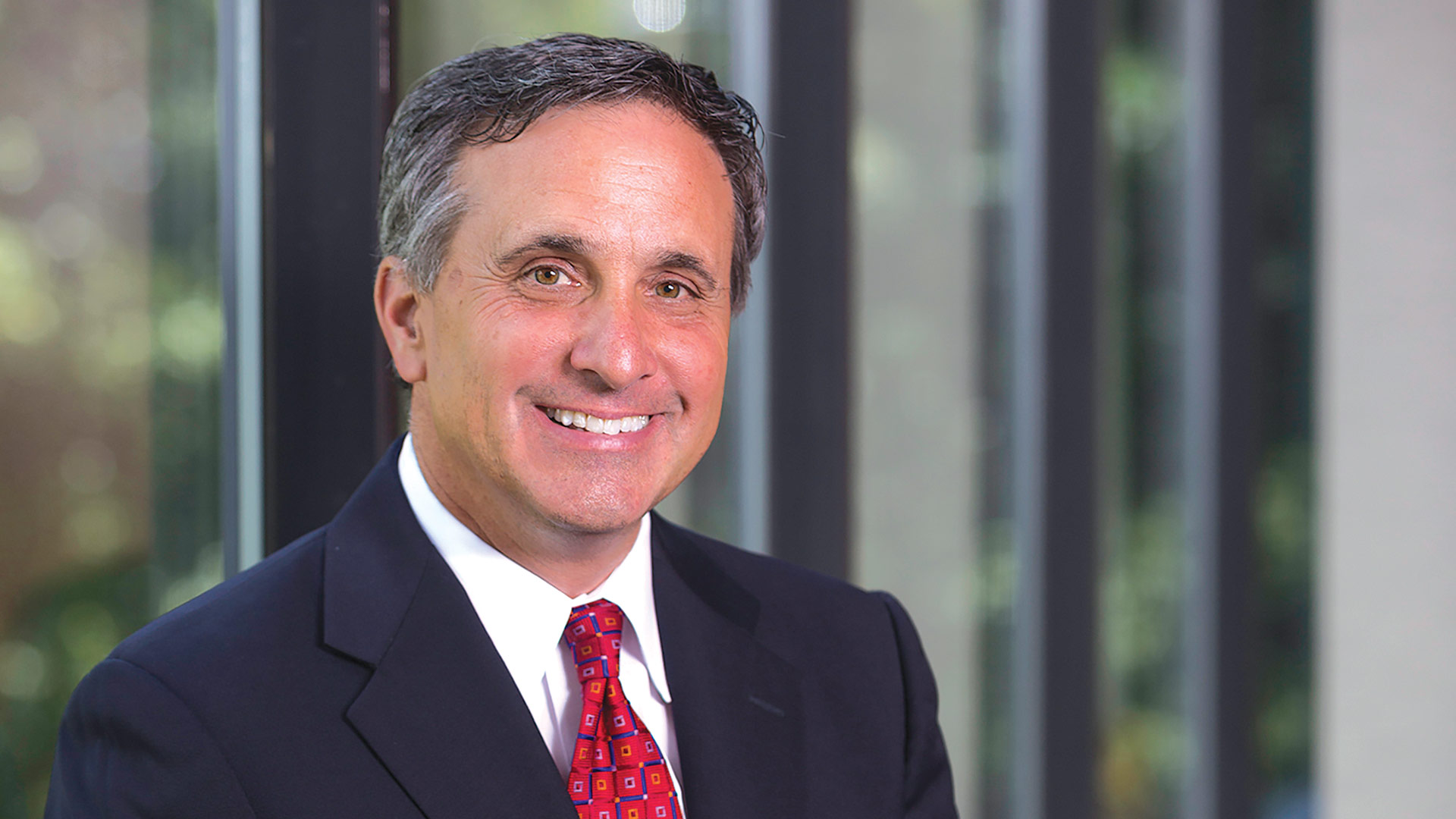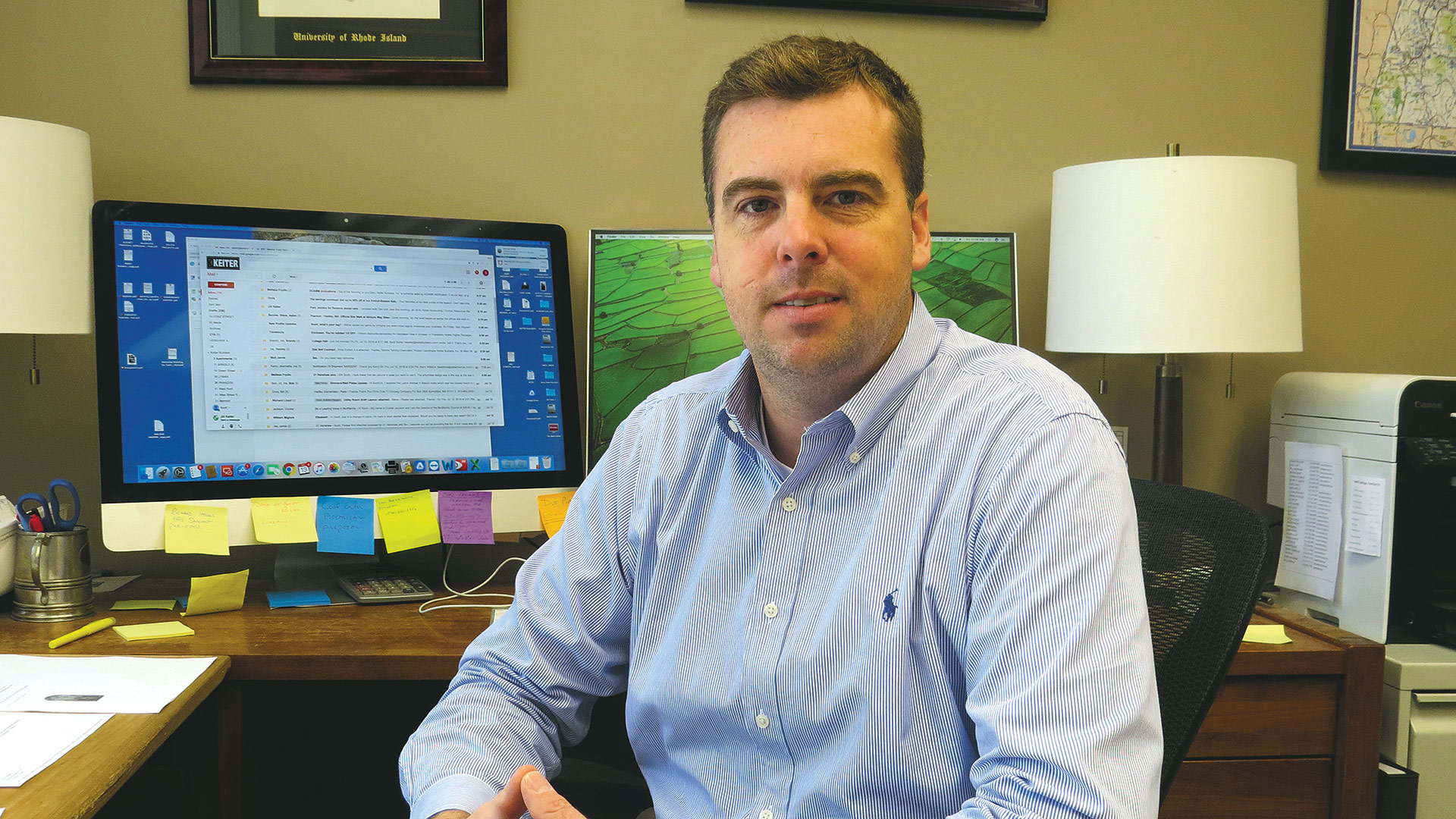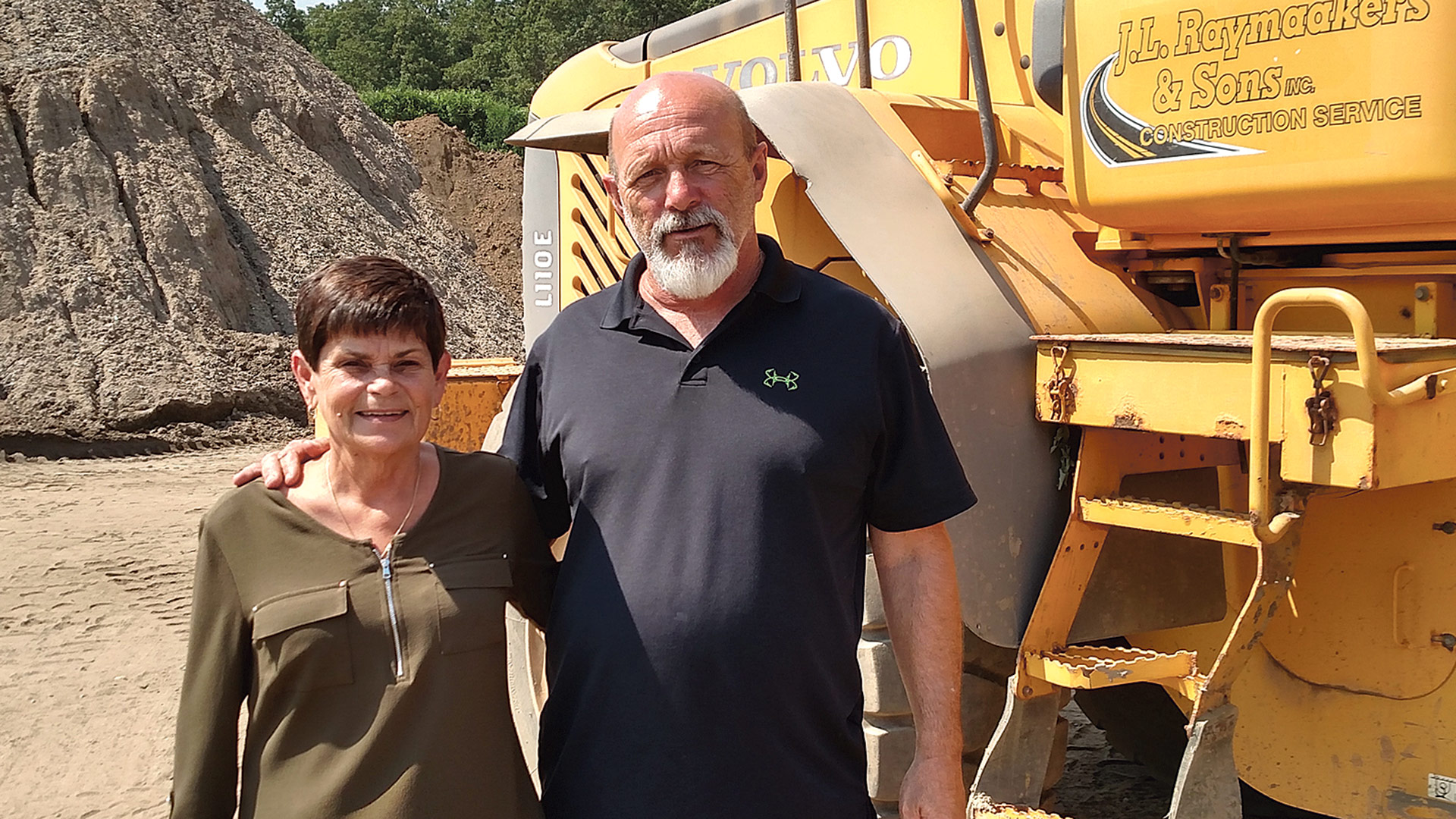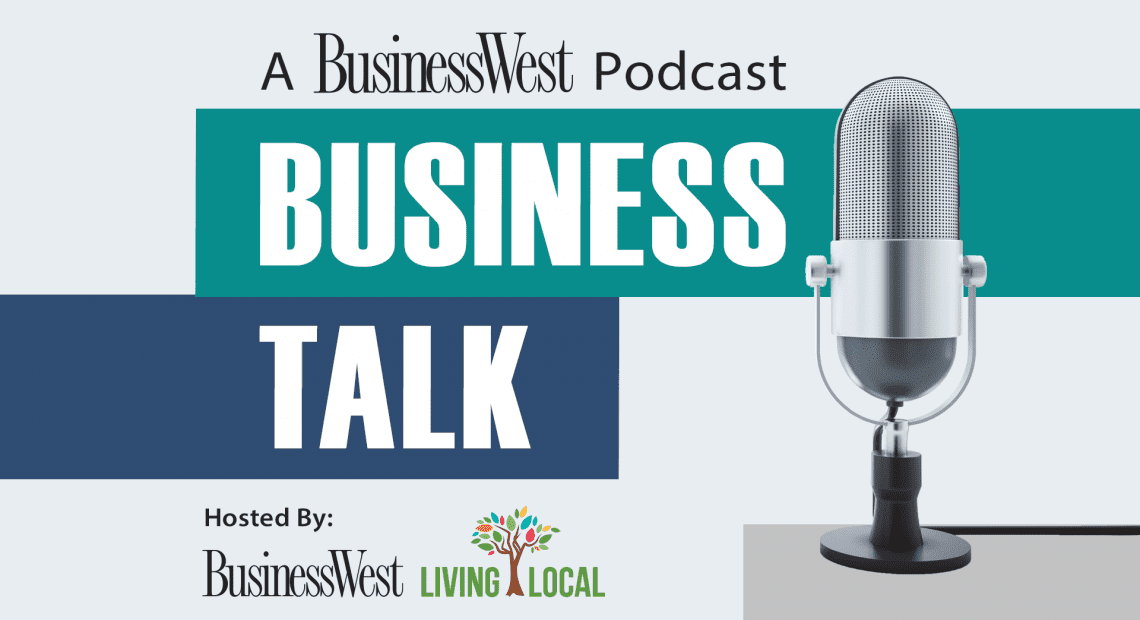History indicates a recession, but most just aren’t seeing evidence of one
 ‘Optimistic skepticism.’ That’s the phrase one area bank president summoned as he talked about the year ahead and, more specifically, talk of a recession. While history — especially as it relates to the inverted yield curve — tells us one is very likely, most all other indicators, from unemployment and inflation rates to the stock market to the steady pipeline of work on the books at area construction-related firms we spoke with, say something else.
‘Optimistic skepticism.’ That’s the phrase one area bank president summoned as he talked about the year ahead and, more specifically, talk of a recession. While history — especially as it relates to the inverted yield curve — tells us one is very likely, most all other indicators, from unemployment and inflation rates to the stock market to the steady pipeline of work on the books at area construction-related firms we spoke with, say something else.
It was the Monday before Christmas. John Raymaakers II wasn’t planning on being in that day, but an important bid was due, and he had to wrap up the paperwork.
There were a lot of bids to vie for in 2019, Raymaakers, a principal with Westfield-based general contractor J.L. Raymaakers & Sons Inc., told BusinessWest, noting that the company prevailed in several of these competitions, success that translated into one of the company’s better years recently.
And it’s a trend he expects will continue into 2020.
“We’re still busy at this time of year, and that’s a good thing for us,” he said, noting that the firm specializes in heavy civil construction work such as water, sewer, and drainage systems. “And we’ve got jobs we’re bidding on — one today and another next week. We have a good amount of work in front of us, so we’re feeling pretty good.”
Raymaakers is not alone when it comes to a generally positive outlook for the year ahead. Indeed, BusinessWest talked with several business owners, including many in the construction sector — usually a highly accurate barometer of the overall economy — to get a feel for what might be in store as a new decade dawns.
Slicing through the various comments, it appears there is some uncertainty about the year ahead, which is natural given the considerable talk about a recession, the fact that is a presidential election year, and the ongoing workforce issues facing virtually every sector of the economy.
But there was also something approaching consensus that the generally good times that prevailed in 2019 — and for the past several years, for that matter — will continue in the year ahead.
Tom Senecal, president and CEO of Holyoke-based PeoplesBank, told BusinessWest that, while some indicators may give pause for concern, such as an inverted yield curve (more on that later), most would indicate there is little trouble on the immediate horizon.
“The economy is doing really well,” he said. “We see that in our numbers — from our loan perspective, with delinquency rates … everything is humming along.”
Curtis Edgin, a principal with the Chicopee-based architecture firm Caolo & Bieniek, sounded a similar tone when asked what he’s seeing and hearing.

Tom Senecal says he believes in history and the power of the inverted yield curve to forecast recessions. But his eyes prompt him to be ‘optimistically skeptical’ about a downturn.
“No one’s seen any signs of it letting up,” he said of an expansion that has lasted a full decade now, adding quickly that he’s seen enough economic cycles to know that things can change quickly. He just hasn’t seen any evidence that they will.
Meanwhile, Scott Keiter, a principal with Northampton-based Keiter Builders, said his firm had a record year in 2019. He quickly qualified that by saying the business, only 11 years old, has grown every year since its inception and 2019 was merely the latest in a succession of ‘record years.’
That said, the company, like others we spoke with, has a solid flow of work that will keep it busy well into the new year, with more projects on the horizon.
“Most of our work is institutional and commercial, but we also saw a significant increase in larger residential projects, and I think that’s a good sign — people are willing to invest significant amounts of money in their properties” he said. “And we have a good, secured pipeline for the spring and early summer, and that’s not always the case.”
But, while general optimism prevails, there are challenges facing business owners and managers, especially when it comes to workforce issues, specifically finding and retaining talent.
Indeed, what was once considered a good problem to have — and some still use that phrase because it generally means business is good — is now considered to be just a problem. A nagging problem.
“My membership would say, to a company, that the biggest barrier they have to increased growth is finding more people and finding the right people to expand the workforce and take on additional work that’s out there,” said Rick Sullivan, president of the Economic Development Council (EDC) of Western Mass. “The biggest problem we’re facing is workforce — finding talent, developing talent, and retaining talent — and that’s across all levels, from entry level to middle and upper management.”
For this issue and its focus on the 2020 Economic Outlook, BusinessWest talked with several business and economic-development leaders about what to expect in the year ahead. While no one has a crystal ball, most say their eyes tell them the decade-long expansion could certainly continue into the next decade.
Work in the Pipeline
Senecal told BusinessWest he was giving a speech a few months back, and while talking about the economy in general, he referenced the inverted yield curve and its historical significance.
“Every time a yield curve has gone inverted or flat in the past 50 years, and there have been seven times, in every single case it has indicated a recession, usually about nine months after the yield curve gets inverted,” he said, summarizing his remarks. “Which would indicate a recession around May or June of 2020; that’s what history tells us.
“But when you look at our economic numbers — extremely low unemployment, inflation in check, economic growth being wonderful, the stock market doing wonderful … I’m not a predictor, but indications don’t feel the same as they have over the past 50 years,” he went on. “If you’re a believer in historical data as a predictor of future performance, then the numbers say a recession should come in May or June. But I just don’t see it. I am a believer in history, and I am a believer in data, but let’s just say that I’m optimistically skeptical when it comes to a recession.”
There are a many reasons to be optimistically skeptical when it comes to a recession, especially when talking with those in construction-related businesses, which, as noted, provide an historically accurate barometer of what’s happening with the economy.
That’s especially true of architects, who usually feel the effects of a downturn before almost anyone else. Edgin, who, as noted, has been through a number of ups and downs in the economic cycle in his 35-year career, said he hasn’t seen anything to indicate the economy is slowing to any great degree.
His firm handles both public- and private-sector work, and especially the former. Edgin said this diversity has helped it ride out the slow times. The firm has completed much of its work involving an $85 million elementary-school project in Easthampton and doesn’t have anything approaching that scale in the pipeline. But there is work in the pipeline.

Scott Keiter says his construction business has a solid pipeline of work heading into 2020, a sign of a generally sound economy.
“We’re busy,” said Edgin, using a word that most in the construction field would certainly like to hear him use. “We’re seeing a significant number of studies for projects like senior centers, town halls, libraries, or police stations — people recognize the need; they just need to get their ducks aligned to keep things moving.”
Meanwhile, his firm is handling a handful of smaller projects, including work at the Boys & Girls Club in West Springfield, Westfield State University, and other institutions, as well as some private-sector projects.
Summing things up, he said the company is “catching our breath” after a solid 2019 punctuated by the Easthampton project and waiting for some of those projects in the study phase — and there are quite a few of them — to come to fruition.
“Maybe that’s the adjustment,” he told BusinessWest. “And if that’s all the adjustment we need, I’m happy with that; we were oversubscribed, let me put it that way, in 2018 and 2019.”
This past year was also a busy one for Keiter Builders, which, as noted, had a number of projects on both the residential and commercial sides of the ledger. The latter category included a good deal of work at both Smith College and Amherst College, while the former featured several new homes and a number of large-scale renovation projects.
Summing up what he’s heard from clients in both realms concerning the economy and the year ahead, he said it’s mostly upbeat.
“The people sending the money our way … it’s generally positive,” he noted. “We’re not hearing anything from them that’s concerning — it’s just your normal chatter. People are steaming forward; they’re investing in infrastructure and capital projects. And that’s good news for us.”
Raymaakers concurred. He said 2019 was a busy year — he said it was a ‘9,’ maybe a ‘9½’ on a scale of 1 to 10 — that featured several large-scale projects, including runway-grading work at Barnes Municipal Airport in Westfield and dam repair at Forest Park. Work was so steady, the company added employees, bringing the total to 39.

John Raymaakers, seen here with his wife and business partner, Laurie, says the company is feeling “pretty good” about 2020 and the economy in general.
Looking ahead, he told BusinessWest the firm remains optimistic.
“We’ll see how the election goes, and after that … who knows?” he said. “Right now, we feel pretty good about things.”
Work in Progress
Those comments sum up how most people feel about almost everything except the workforce challenges facing them.
Raymaakers said his company did bring on more people, but finding them wasn’t easy. Keiter said his firm also struggled to find people to handle its growing workload.
And Senecal confirmed that the problem extends to positions at all rungs of the hiring ladder. To put the matter in perspective, he talked about a position the bank has been trying to fill — unsuccessfully — for half a year now.
“We’ve been looking for someone for more than six months in our Accounting department, someone with five to 10 years of experience in the banking industry,” he noted. “And what’s more surprising is that, with all the consolidation going on in this industry, we’re still not able to find someone for that position.
“Overall, it is very difficult to find people right now for many of the jobs where we’re looking for specific skills — it’s virtually impossible in some areas,” he went on. “It’s been such a challenge, and that’s a clear indication of what’s happening in many sectors.”
Indeed, the problem is prevalent in pretty much every sector of the economy, said Sullivan, noting that it is manifesting itself in a number of ways.
One is some upward movement on wages and benefits, which is yet another sign of a healthy economy, he said, adding that, while this isn’t happening across the board, there is movement in many sectors where there is steep competition for talent, especially precision manufacturing and financial services.
“People have choices when it comes to where they can work,” he told BusinessWest. “People are looking around, so in order to keep a workforce, people are having to pay a little more and provide some other benefits or incentives.”
In addition to movement on wages, there is a greater focus on trying to bring more people into the workforce, said Sullivan, noting that, through a grant from the Boston Federal Reserve and the Working Cities Initiative, the region has launched efforts to bring some of those who have been on the outside looking in when it comes to the workforce into the fold.
These endeavors involve mostly entry-level positions, and they’re a relatively new point of emphasis for the EDC, he said, adding that they are generating some results, putting those who have been unemployed or underemployed not just into jobs but onto career paths.
Meanwhile, the EDC is looking at taking steps to bolster the workforce, including what could be called recruiting efforts — steps to market Western Mass. and its many benefits in the hope that some may seek to relocate.
“This might involve some regional advertising initiative — an effort to raise awareness about Western Mass. and how it’s a great place to live, there are opportunities here, the cost of living is lower than many other areas of the state and the country,” he explained. “And while it’s a great place to live, it’s also a great place to work.”
Such efforts would be focused on other areas in the Northeast, especially older manufacturing cities that may not be doing as well as the Greater Springfield area, Sullivan noted, adding that he’s not expecting to lure people from Arizona or Florida.
“Sometimes, it’s a little tough to sell those winter months,” he said with a laugh, adding that the region does have many saleable assets, and its businesses need workers to grow.
Such a campaign would not have a large budget, and it would be waged mostly with social media, he said, adding that there is an opportunity to attract people for certain sectors, especially precision manufacturing.
“It will not a be a large media campaign — you won’t be seeing us on the Patriots game,” he said, adding that targeted messages promoting opportunities in specific sectors may help grow the workforce.
Forward Progress
Traditionally, the phrase one hears when it comes to the economy and the year ahead is ‘cautious optimism.’
There’s some of that this year — quite a bit, in fact. But overall, there’s more of that optimistic skepticism that Senecal spoke of and that others referenced, even if they didn’t use those exact words.
History, and some of the economic indicators, tell us that a downturn is likely, if not imminent.
But most business owners and managers just aren’t seeing it — and that’s certainly a good sign as a new year and a new decade begin.
George O’Brien can be reached at [email protected]

















 ‘Optimistic skepticism.’ That’s the phrase one area bank president summoned as he talked about the year ahead and, more specifically, talk of a recession. While history — especially as it relates to the inverted yield curve — tells us one is very likely, most all other indicators, from unemployment and inflation rates to the stock market to the steady pipeline of work on the books at area construction-related firms we spoke with, say something else.
‘Optimistic skepticism.’ That’s the phrase one area bank president summoned as he talked about the year ahead and, more specifically, talk of a recession. While history — especially as it relates to the inverted yield curve — tells us one is very likely, most all other indicators, from unemployment and inflation rates to the stock market to the steady pipeline of work on the books at area construction-related firms we spoke with, say something else.







